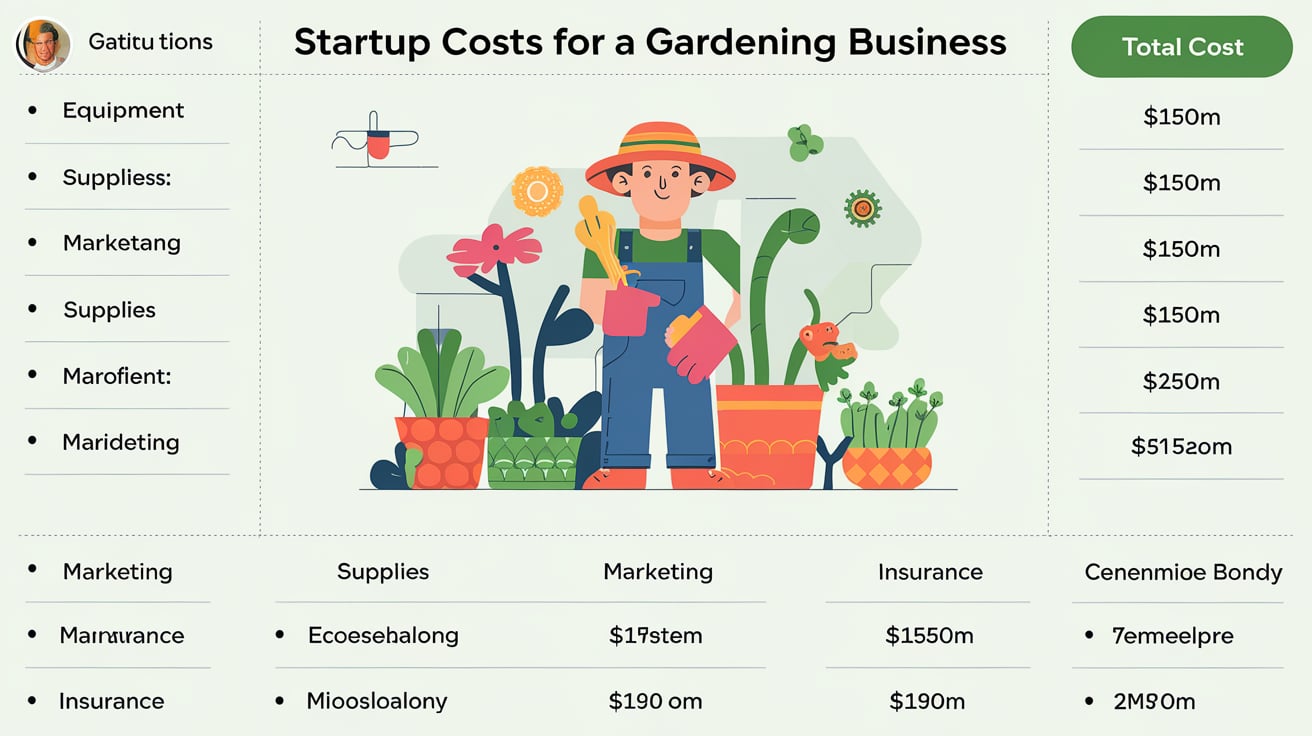- Artificial Intelligence (AI) and Machine Learning (ML): AI and ML are transforming businesses across various sectors by automating processes, predicting outcomes, and improving decision-making.
- Cloud Computing: Cloud services continue to evolve, offering scalability, flexibility, and cost-efficiency for businesses, enabling them to store and access data remotely and securely.
- Internet of Things (IoT): IoT devices are increasingly integrated into business operations, allowing for real-time data monitoring, predictive maintenance, and enhanced customer experiences.
- Cybersecurity: With the rise in cyber threats, cybersecurity remains a critical focus for businesses, leading to investments in advanced security measures like AI-driven threat detection and zero-trust architectures.
- Blockchain: Beyond cryptocurrencies, blockchain technology is being explored for secure transactions, supply chain transparency, and smart contracts, promising greater efficiency and trust in business operations.
- Remote Work and Collaboration Tools: The shift towards remote work has accelerated the adoption of collaboration tools, virtual meeting platforms, and digital workspace solutions to facilitate communication and productivity.
- 5G Technology: The rollout of 5G networks is expected to revolutionize connectivity, enabling faster data transfer, supporting IoT deployments, and enhancing mobile capabilities for businesses.
- Augmented Reality (AR) and Virtual Reality (VR): AR and VR technologies are finding applications in training, marketing, and customer engagement, offering immersive experiences that drive innovation and efficiency.
- E-commerce and Digital Transformation: Businesses are increasingly investing in e-commerce platforms and digital transformation initiatives to adapt to changing consumer behaviors and improve operational efficiency.
- Sustainability and Green Technologies: There’s a growing emphasis on integrating sustainable practices and green technologies into business operations, driven by environmental concerns and regulatory requirements.
These trends are shaping the future of business operations, strategy, and customer engagement across industries.
Step into the dynamic realm of business technology, where innovation dances with possibility, shaping a future laden with endless opportunities. Welcome to an exhilarating journey through the top trends in business technology, poised to revolutionize the very fabric of our digital landscape. In this ever-evolving sphere, we unravel the threads of progress that weave together ingenious solutions and transformative advancements.
Embark on a quest to explore cutting-edge innovations that are not just trends but beacons illuminating the path forward for businesses worldwide. Unveil how these technological marvels are poised to redefine strategies, reshape operations, and amplify growth prospects in ways previously unseen.
As we delve into this world where data is king and connectivity reigns supreme, brace yourself for insights that transcend boundaries and empower you to navigate the shifting tides of digital transformation with confidence.
Join us as we navigate through the intricate web of business technologies, demystifying complexities and paving a way towards actionable steps for success. It’s time to equip yourself with the tools needed to embrace change gracefully while capitalizing on the boundless possibilities that lie at your fingertips.
Are you ready to step boldly into this realm of endless potential? Let’s embark on this enlightening journey together – where every click unlocks a new frontier of opportunity and propels you towards a future brimming with promise.
Data-Driven Decision Making.
In today’s fast-paced business environment, harnessing the power of big data analytics is no longer just a competitive advantage; it’s a necessity. By analyzing vast volumes of data, businesses can gain valuable insights to make informed decisions that drive growth and efficiency.
Imagine a retail company using sales data to predict consumer trends accurately, stocking inventory strategically, and offering personalized promotions based on individual preferences. This level of precision is achievable through effective utilization of big data analytics.
Moreover, the integration of artificial intelligence (AI) and machine learning tools into decision-making processes has revolutionized how businesses operate. Through predictive analytics, companies can anticipate market demands, optimize operational processes, and deliver hyper-personalized customer experiences.
Take the example of an online streaming service utilizing AI algorithms to recommend content tailored to each viewer’s tastes, enhancing user satisfaction and retention rates significantly.
To further enhance decision-making capabilities, organizations are adopting advanced data visualization techniques to communicate insights clearly across teams. Picture a marketing team visualizing campaign performance metrics in intuitive dashboards or a sales department understanding customer behavior patterns through interactive charts.
Data visualization not only simplifies complex information but also fosters collaboration by enabling stakeholders to interpret data more effectively and align strategies for shared objectives.
Cloud Computing Evolution.
In the dynamic realm of business technology, cloud computing stands out as a transformative force reshaping traditional IT landscapes. Embracing cloud services is no longer just an option but a strategic imperative for organizations seeking scalability, flexibility, and cost-effectiveness in today’s digital-first world.
By migrating operations to the cloud, businesses can unlock agility in adjusting resources to meet fluctuating demands without heavy capital investments in physical infrastructure.
To bolster security measures without compromising on efficiency, forward-thinking enterprises are turning to hybrid cloud solutions. This approach combines the best of both private and public clouds, allowing companies to benefit from enhanced data protection while leveraging the unparalleled scalability and accessibility offered by public cloud platforms.
As cyber threats continue to evolve in sophistication, maintaining a robust security posture is paramount for safeguarding sensitive information and ensuring uninterrupted business operations.
Furthermore, the rising prominence of edge computing presents exciting opportunities for organizations looking to process data closer to its source for real-time applications.
By decentralizing computational power and shifting processing tasks closer to endpoints, edge computing minimizes latency issues and enables quicker decision-making processes crucial for scenarios such as IoT deployments or real-time analytics.
This innovative approach not only enhances operational efficiency but also paves the way for creating immersive user experiences powered by instantaneous data insights at the edge.
As businesses navigate through the evolving technological landscape, mastering the evolution of cloud computing represents a pivotal step towards harnessing innovation while meeting the demands of an increasingly interconnected world.
By embracing hybrid cloud models and exploring edge computing capabilities alongside their existing infrastructures, companies can position themselves at the forefront of digital transformation, ready to capitalize on emerging opportunities and drive sustainable growth in a rapidly changing business environment.
Cybersecurity Landscape: Safeguarding Your Business in a Digital World.
In today’s digital landscape, one of the most critical trends in business technology is cybersecurity. With cyber threats constantly evolving and becoming more sophisticated, it is imperative for businesses to strengthen their defenses. Implementing robust cybersecurity measures can help prevent data breaches, ransomware attacks, and other malicious activities that can severely impact operations.
By staying proactive and investing in cutting-edge AI-driven cybersecurity tools, businesses can detect threats early on and swiftly respond to incidents before they escalate.
For example, companies like XYZ Solutions have successfully integrated AI-powered cybersecurity platforms that employ machine learning algorithms to analyze patterns in network traffic and identify anomalies that may indicate potential security breaches.
By leveraging these advanced technologies, XYZ Solutions has significantly enhanced its threat detection capabilities and reduced response times to cyber incidents. Moreover, comprehensive cybersecurity training programs are essential to educate employees about best practices, security protocols, and recognizing social engineering tactics used by cybercriminals.
By prioritizing employee awareness through continuous training initiatives, businesses can empower their workforce to become the first line of defense against cyber threats. This approach not only fosters a culture of cybersecurity consciousness within the organization but also helps mitigate risks associated with human error or negligence.
In essence, staying vigilant and proactive in enhancing cybersecurity measures equips businesses with the necessary tools to safeguard their sensitive data, maintain customer trust, and uphold operational resilience in an increasingly interconnected digital world.
Remote Work Technologies: Redefining the Workplace of Tomorrow.
In response to significant shifts in work dynamics, remote work technologies have emerged as the bedrock of modern workplaces, fostering collaboration and efficiency across geographically dispersed teams.
Embracing tools like video conferencing platforms such as Zoom and project management software like Asana has enabled seamless communication and project coordination, blurring the lines between physical offices and virtual workspaces.
Imagine a scenario where a marketing team spread across different continents can hold real-time brainstorming sessions or conduct client presentations with a click of a button.
However, with this digital transformation comes the pressing need for robust data security protocols in remote work environments. Encryption services and Virtual Private Networks (VPNs) play pivotal roles in safeguarding sensitive information shared over virtual networks.
By deploying end-to-end encryption mechanisms and VPNs, companies ensure that confidential data remains protected from cyber threats, whether employees are working from home, coffee shops, or co-working spaces.
Taking employee well-being into account is essential for sustaining productivity and morale in remote settings. Introducing wellness apps offering mindfulness exercises or mental health resources accessible to all staff members can contribute significantly to their overall welfare.
Furthermore, by providing flexible work arrangements tailored to individual needs—such as adjustable work hours or designated “no-meeting” days—companies demonstrate their commitment to supporting a healthy work-life balance even beyond traditional office boundaries. These initiatives not only showcase organizational empathy but also boost employee engagement and retention rates in the long run.
Internet of Things (IoT) Integration.
In the realm of business technology, harnessing the power of the Internet of Things (IoT) has become a game-changer for organizations looking to streamline their operations and enhance efficiency. By integrating IoT devices into workflows, businesses can unlock a myriad of benefits ranging from smart automation to predictive maintenance.
For instance, manufacturing facilities can utilize IoT sensors to monitor equipment health in real-time, predicting potential breakdowns before they occur and enabling proactive maintenance strategies. This not only reduces downtime but also extends the lifespan of machinery, ultimately leading to cost savings and increased productivity.
Furthermore, the implementation of IoT sensors extends beyond equipment monitoring to include environmental conditions. Imagine a logistics company using IoT devices to track temperature-sensitive shipments continuously, ensuring that goods remain within specified parameters throughout transit.
By leveraging this real-time data on environmental factors, companies can guarantee product quality and compliance with industry standards, thereby fostering customer trust and loyalty.
Moreover, interconnected IoT devices have revolutionized traditional workflows by providing valuable insights derived from data analytics. By creating an ecosystem where devices communicate seamlessly with each other and share data instantaneously, businesses can make informed decisions based on comprehensive information.
For example, retailers can optimize their inventory management systems by utilizing IoT-integrated sensors that track product movement in real-time. This data-driven approach not only minimizes stockouts but also enables tailored marketing campaigns based on customer preferences gathered through IoT analytics.
Through strategic integration of IoT technologies, businesses are poised to enhance operational efficiencies significantly while unlocking new possibilities for innovation and growth. Embracing the interconnected world of IoT allows organizations to adapt to changing market dynamics swiftly and stay ahead in an increasingly competitive landscape.
Blockchain technology.
Blockchain technology has transcended its association solely with cryptocurrencies, paving the way for a myriad of innovative applications in businesses worldwide. One such application lies in enhancing supply chain transparency by utilizing blockchain’s decentralized and transparent nature.
Companies can now trace products through every stage of the supply chain, ensuring authenticity, reducing counterfeit goods, and building trust with consumers. For instance, luxury fashion brands like Louis Vuitton are using blockchain to authenticate high-end products, reassuring customers of their purchase’s genuineness.
Moreover, smart contracts powered by blockchain technology have revolutionized the way transactions are conducted. These self-executing contracts automatically enforce agreed-upon terms when predefined conditions are met, eliminating the need for intermediaries and streamlining processes.
For example, real estate transactions can be securely facilitated through smart contracts where ownership transfers only upon completion of payment milestones. This not only simplifies complex processes but also reduces costs and enhances transaction security.
In industries such as healthcare, finance, and logistics, blockchain is making significant inroads by offering decentralized ledger technology that ensures data integrity and enhances trust in transactions. Healthcare providers are leveraging blockchain to securely store patient records while enabling seamless sharing across different medical facilities, improving care continuity and patient outcomes.
Financial institutions are exploring blockchain for faster cross-border payments with reduced fees and increased transparency.
Likewise, logistics companies are utilizing blockchain to track shipments in real-time, optimize routes, and enhance overall operational efficiency. The transformative potential of blockchain innovations is reshaping traditional business practices and setting new standards for transparency and security across various sectors.
Augmented Reality (AR) & Virtual Reality.
In the fast-evolving landscape of business technology, Augmented Reality (AR) and Virtual Reality (VR) are taking center stage, transforming customer experiences through immersive applications. Imagine a scenario where customers can explore products in a virtual showroom, experiencing them up-close as if they were physically present.
This level of engagement not only enhances brand interaction but also boosts sales by providing a unique and personalized shopping experience. Retail giants like IKEA have already leveraged AR to allow customers to visualize furniture in their homes before making a purchase, revolutionizing the way we shop.
Furthermore, VR technology is revolutionizing training processes by offering simulation-based learning environments. Companies like Walmart have implemented VR training programs to simulate real-world scenarios for their employees, enhancing retention rates and improving skill development.
This not only streamlines the training process but also ensures that employees are better equipped to handle complex situations with confidence and expertise.
Moreover, AR and VR technologies enable businesses to engage customers remotely through interactive tours or virtual showrooms. Real estate firms utilize VR tours to showcase properties to potential buyers from anywhere in the world, saving time and resources while expanding their reach globally.
By harnessing the power of AR and VR for remote engagements, companies can create memorable experiences that leave a lasting impact on customers, setting themselves apart in competitive markets.
Sustainability Initiatives in business technology.
Sustainability Initiatives in business technology have become more crucial than ever with a growing focus on environmental responsibility. By embracing green technologies for energy efficiency, companies can not only reduce their carbon footprint but also cut down on operational costs in the long run.
Implementing sustainable IT solutions, such as e-waste recycling programs and energy-efficient hardware, not only showcases a commitment to environmental conservation but also fosters a culture of innovation within the organization. For instance, tech giants like Google have made significant strides in this area by powering their data centers with renewable energy sources like wind and solar.
In addition to tangible practices like e-waste recycling, companies are now leveraging tech-driven sustainability initiatives to align with corporate social responsibility goals.
By supporting initiatives such as community clean-up events organized through digital platforms or implementing eco-friendly practices in their supply chains using blockchain technology for transparency, businesses can make a positive impact beyond their operations.
Companies like Patagonia have set a benchmark by integrating environmental stewardship deeply into their business model, inspiring others to follow suit and contribute meaningfully towards sustainable development.
Moreover, the shift towards sustainability in business technology is resonating globally as consumers increasingly prefer environmentally conscious brands. Smart companies are recognizing this trend by incorporating sustainability initiatives into their core values and product offerings.
For instance, Tesla’s electric vehicles have disrupted the automotive industry not only with cutting-edge technology but also by promoting cleaner transportation alternatives. By aligning technological advancements with sustainability efforts, businesses can play a pivotal role in shaping a greener future while staying competitive in an evolving market landscape.
Conclusion.
As we come to the end of our exploration into the top trends in business technology, we have delved into the transformative power of data-driven decision making, the evolving landscape of cloud computing, the critical importance of cybersecurity measures, and the seamless integration of remote work technologies.
It is clear that staying ahead of these trends is not just beneficial but essential for driving innovation and success in businesses globally. By embracing these advancements, companies can position themselves as trailblazers in their industries, leveraging cutting-edge technology to propel their growth and competitiveness.
In a rapidly changing world where technology reigns supreme, being well-versed in these business technology trends opens up a realm of possibilities for organizations looking to thrive in the digital age.
By harnessing data analytics, optimizing cloud services, fortifying cybersecurity defenses, and adapting to remote work environments effectively, businesses can lay down the foundation for sustainable growth and relevance.
Remember: innovation is not just a choice—it’s a necessity. So equip yourself with knowledge on these top trends, take proactive steps towards implementation, and watch how your business evolves into a beacon of progress in the ever-evolving landscape of technology-driven enterprises.
As an author writing and creating business courses and articles, I am responsible for developing and delivering high-quality content that is informative, engaging, and relevant to the target audience.
I monitor and analyzes business trends and topics to create courses and articles that provide value to readers and students here. I am responsible for ensuring that all content is accurate, well-written, and met the needs of the target audience.






